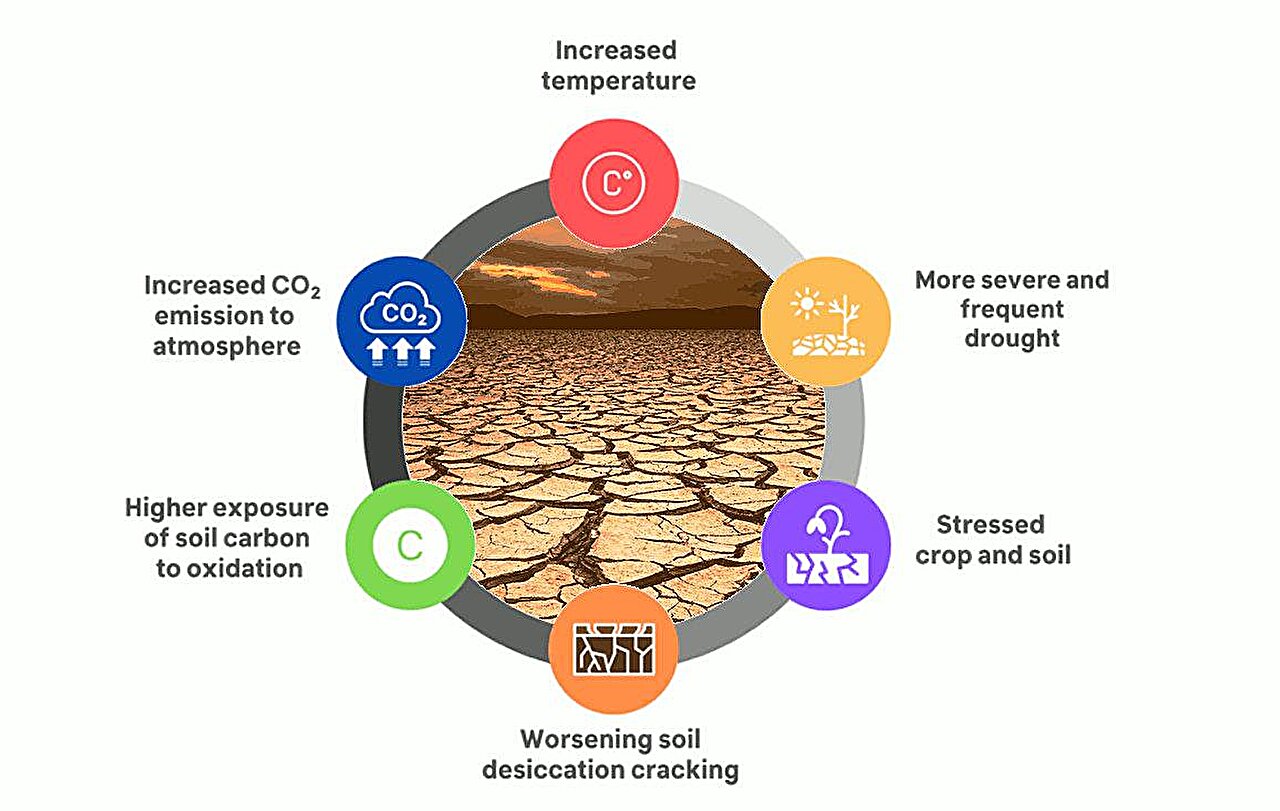Rising global temperatures are causing soils to release carbon dioxide at unexpectedly rapid rates, a phenomenon that could significantly accelerate climate change. Recent studies reveal that soils, which store more than twice the carbon found in the atmosphere, are increasingly vulnerable to warming, leading to faster microbial decomposition of organic matter and subsequent carbon release.
Traditionally, much attention has focused on carbon release from melting permafrost in cold regions. However, new research highlights that soils in subtropical and tropical zones, which are warmer and wetter, are also highly susceptible to temperature-induced carbon loss. For instance, a study analyzing an 18,000-year sediment record from the Nile Delta found that temperature, rather than rainfall or runoff, was the dominant factor influencing the age and decomposition rate of soil carbon. As the Earth warmed after the last ice age, microbial activity accelerated, causing a much faster release of carbon dioxide than previously anticipated.
Moreover, field experiments have demonstrated that warming affects not only the surface soils but also deeper layers, which contain more than half of the planet’s soil organic carbon. Warming soil layers down to one meter increased carbon dioxide emissions by 34 to 37 percent compared to non-warmed soils, with deeper layers showing greater sensitivity to temperature changes. This finding challenges earlier assumptions that only surface soils contribute significantly to carbon release and underscores the risk of underestimating soil carbon feedbacks in climate models.
The scale of potential carbon release from soils is staggering. Projections indicate that by 2050, over 55 trillion kilograms of carbon could be emitted from soils under a business-as-usual warming scenario, which is about 17 percent more than emissions currently attributed to human activities. A 1°C increase in soil temperature alone could release 30 petagrams of carbon, nearly double the annual carbon emissions from fossil fuels. Since global temperatures are expected to rise by around 2°C by mid-century, the risk of accelerated soil carbon loss is substantial.

This rapid carbon release is driven by increased microbial activity in warmer soils. Microbes break down stored organic matter more quickly, releasing carbon dioxide and methane—both potent greenhouse gases—into the atmosphere. This creates a positive feedback loop where warming leads to more greenhouse gas emissions, which in turn cause further warming. Soils in northern latitudes, such as tundra and boreal forests, are particularly vulnerable due to the large amounts of organic matter accumulated under cold conditions that slow decomposition. As these soils warm, their microbial communities become more active, accelerating carbon release.
The implications for climate change are profound. Soil carbon feedbacks introduce significant uncertainty into climate projections and could undermine efforts to limit global warming. Mitigating this risk requires both reducing greenhouse gas emissions and adopting land management practices that help retain soil carbon. Conservation agriculture techniques, such as no-tillage farming, cover cropping, managing grasslands to prevent overgrazing, and revegetating marginal lands, can help slow carbon loss from soils.
However, experts caution that soil carbon storage has limits, especially in tropical and terrestrial ecosystems, and that these measures alone will not be sufficient. Additional strategies to curb carbon emissions from other sources remain essential to avoid the most damaging effects of climate feedbacks from soils.
In summary,
rising temperatures are triggering unexpectedly rapid carbon release from soils worldwide, driven by enhanced microbial decomposition. This process threatens to accelerate climate change by releasing vast amounts of stored carbon dioxide and methane, particularly from deeper soil layers and vulnerable ecosystems. Addressing this emerging challenge requires integrated approaches combining emission reductions and sustainable land management to preserve soil carbon stocks and mitigate climate risks.

